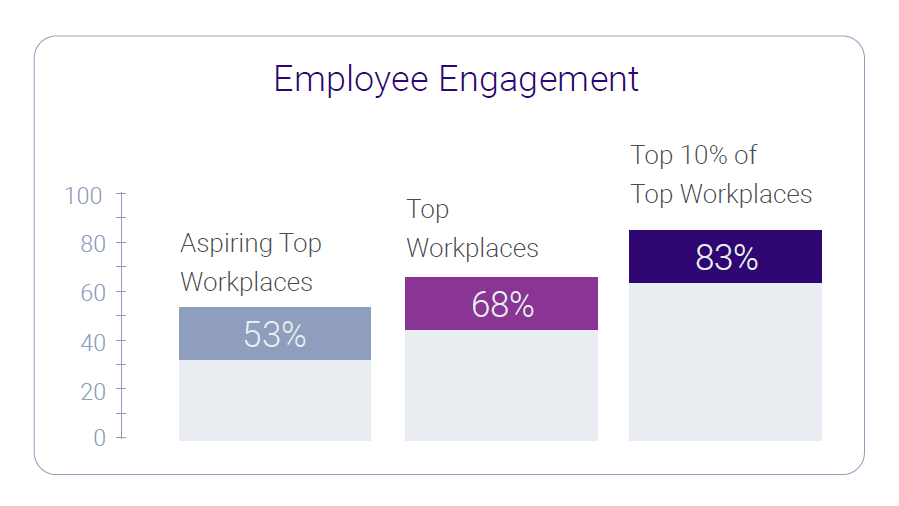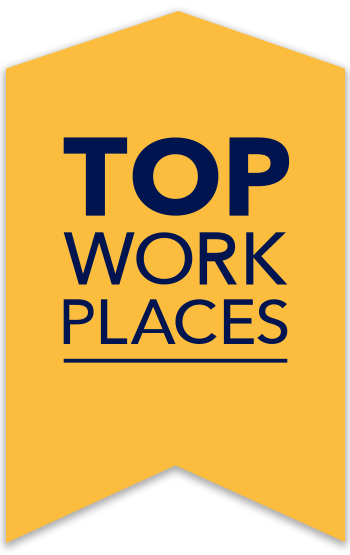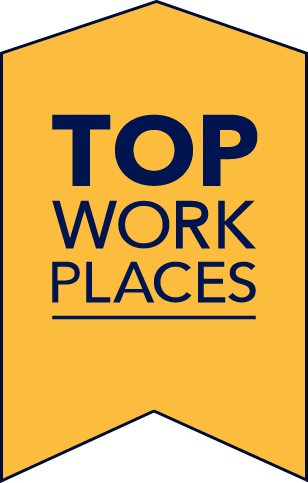Employee experience and engagement are related but not identical
High-performing companies need the hearts and minds of their employees. They can get there in different ways. One way is to focus on creating an engaging culture that puts people first. The other is about improving the employee experience. And both of them work together to serve a common cause: creating a great workplace for employees.
What is employee experience?
What is employee experience? Employee experience refers to the journey employees have with a company throughout the lifecycle of their tenure. It starts even before they’re hired and doesn’t end when they leave your company. From recruitment and onboarding to the work, technology, and even the exit process, employee experience includes every interaction.
Companies that prioritize a people-first culture – such as Top Workplaces – invest significantly in an employee experience strategy. Because doing so builds a stronger, more engaged culture that translates into better business results. But there’s a whole lot more to improving the employee experience than culture-building alone.
Improving the employee experience
Top Workplaces realize that a great employee experience requires analyzing each moment in the employee journey and understanding how it impacts employees emotionally, psychologically, or physically. This might include the human resources information system, internal communication tools, the office’s physical layout, benefits, and more.
Improving the employee experience requires a critical look at anything employees interact with during their lifecycle and then repairing what negatively impacts employee engagement. And when there is less friction, there will be more engagement.
Employee engagement vs. employee experience
Employee engagement is a psychological state that refers to employees’ commitment to their company and its goals. A popular buzzword, there are many definitions of employee engagement. At Energage, we define it simply as “individual passion working toward shared success.”
Employee engagement isn’t dependent upon free lunches, ping pong tables, or bring-your-dog-to-work day. Employee engagement is about connection, and it requires leadership to prioritize a people-first culture.
And why is employee engagement important? When employees are highly engaged, they go above and beyond and bring their best every day. It’s also the only way to minimize unwanted turnover, increase productivity, and improve employee referral rates. A lack of employee engagement is often cited as one of the top reasons people quit their jobs.
Energage has studied more than 70,000 companies across the United States. Our research shows that Top Workplaces have doubled the rate of engaged employees (68 percent) compared to average organizations. At the top 10 percent of Top Workplaces, the employee engagement rate number jumps to an incredible 83 percent.
Aspiring Top Workplaces – companies that participate in the employer recognition program but have not won – achieve an average of 53 percent engagement, higher than the average U.S. rate.
Higher engagement is a result of a great employee experience
Ultimately, one of the key outcomes of creating a great employee experience is higher employee engagement. Building a people-first culture makes employees feel important, respected, and trusted. By fixing problems in the employee experience, people can accomplish their goals and achieve success more easily.
Companies should approach how to improve employee engagement in both ways. They should consistently be monitoring and improving their cultures, especially now. Evaluating the employee experience and understanding what matters most to employees is a great place to start.
A successful strategy starts with feedback
Do you know what truly matters to your employees? To build a great employee experience, start with an engagement survey that captures candid employee feedback. You’ll convey to your employees that you value their input. You’ll also gain data-driven insights that can help you to make people-informed decisions.
The Energage Workplace Survey is the same engagement survey used to qualify Top Workplaces. It assesses several factors, including 15 research-based culture drivers and three statements measuring employee engagement:

Commitment: “I have not considered searching for a better job in the past month.”
Referral: “I would highly recommend working at this company to others.”
Motivation: “This company motivates me to give my very best at work.”
Employees who respond positively to all three of these statements are engaged. They’ll go above and beyond for your company as productive, committed employees. They’ll even recommend your company as one of the great places to work and help to recruit their connections.
Find out what matters most to your employees. Nominate your company for Top Workplaces, the recognition program that’s powered entirely by employee feedback.

 Stand out with an award-winning
Stand out with an award-winning